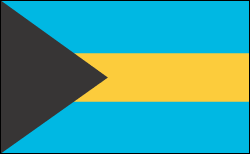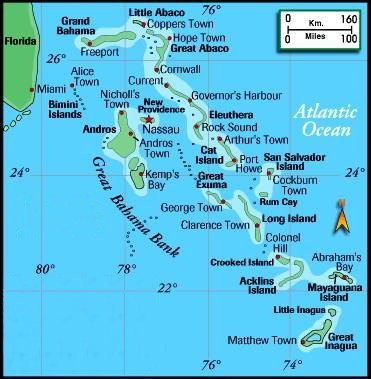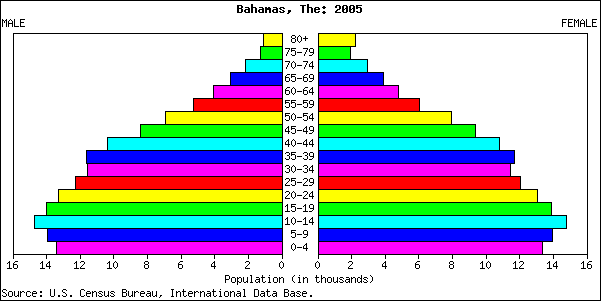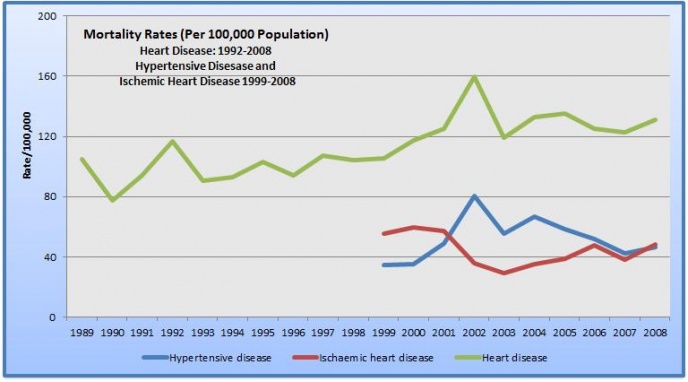Bahamas: Difference between revisions
No edit summary |
No edit summary |
||
| Line 73: | Line 73: | ||
== Delivery of Care == | == Delivery of Care == | ||
* | *Physiotherapy services are delivered by registered physiotherapists in both the private and public settings. In 2008 there were 41 registered physiotherapists working in the Bahamas which represents a rate of 1.2 per 10,000 population. The numbers of physiotherapists are well below the numbers necessary to adequately serve the population in the areas of treatment and prevention. This contributes to bottle necks in the system, especially in the public health care system by which the majority of the bahamian population accesses health care. The lack of adequate numbers of physiotherapy personnel provides a barrier to timely access to physiotherapy intervention and services.<sup>3</sup> As a result there are limitations to the scope of health promotion and prevention that can be performed by the physiotherapy community as a result of the overwhelming numbers of persons who require prompt care as a result of injury and/or dysfunction. At present there are long wait lists at the two main hospitals in Nassau, for persons who require physiotherapy assessment and treatment. For example, persons who require out-patient physiotherapy services at the Princess Margaret Hospital are faced with an approximately four month wait period. However special considerations are give to persons who require continued care after hospitalization and who live on one of the family islands and are required to remain in Nassau for rehabilitation. Thses individuals are given priority and seen within a week of referral. | ||
*Home health physiotherapy services are only available through private services at present and there are a | *Home health physiotherapy services are only available through private services at present and there are a number of physiotherapists who are available to offer these services in New Providence and Grand Bahama.<br> | ||
== Type of Health System == | == Type of Health System == | ||
Revision as of 21:22, 15 July 2011
Welcome to Worldwide Physical Therapy Practice: a focus on Primary Care Physical Therapy
This is a project created by and for the students in the School of Physical Therapy at the University of St. Augustine in St. Augustine Florida. Please do not edit unless you are involved in this project, but please come back in the near future to check out new information!!
Original Editor - Michelle O'Neal.
Lead Editors - Your name will be added here if you are a lead editor on this page. Read more.
The Bahamas  [edit | edit source]
[edit | edit source]
- The Commonwealth of the Bahamas is an archipelago consisting of 29 islands, 661 cays and 2387 islets or rocks. It has a total land mass of 5,382 sq.miles. scattered over 80,000 sq.miles of the Atlantic Ocean. Over 95% of the population lives on just seven islands. The two major population centers are Nassau, the capital, located on New Providence, and Freeport, located on Grand Bahama. The other populated islands and cays are called Family Islands.1,2 About 94% of the population lives on five of the islands. About 70% of thepopulation lives in Nassau (Population Census2000, Department of Statistics).3
Patient Access to Physiotherapy or Physical Therapy Services / Entry Point[edit | edit source]
- Physiotherapy services in the Bahamas are delivered by licensed physiotherapists who work in both the private and public sectors. Physiotherapists in the Bahamas are few in number. Considering that the Bahamas is an archipelago of islands consisting of 700 islands, cays and rocks, 29 of which are inhabited there are fewer than 50 licensed physiotherapists to serve the needs of the population of 342,000 persons.4 While there are a number of small privately owned physiotherapy clinics most persons access physiotherapy services via the available hospitals. The island of New Providence on which is located the capital Nassau, is home to The Princess Margaret Hospital, the main acute care general public hospital on the island. Both In-patient and out-patient physiotherapy services are accessed through this hospital. The Sandilands Rehabilitation Centre, a geriatric and mental health institution also offers in- and out-patient physiotherapy services. Doctors Hospital, the only acute care private hospital of its kind also offers both in- and out- patient physiotherapy services. The Rand Memorial Hospital, an acute care facility located in the city of Freeport, Grand Bahama, also offers acute care and out-patient ambulatory physiotherapy services. Most of the smaller islands are equipped with community clinics which are staffed by a nurse and a travelling physician. All cases that cannot be adequately addressed at the smaller medical facilities are airlifted to the larger hospitals in Nassau or Freeport for further management.
Apart from a few private clinics in some of the smaller islands, most patients requiring physiotherapy intervention travel to Nassau or Freeport to access these services. - Physiotherapy care is physician referred as the current legislature does not support direct access at this time. Patients who require physiotherapy intervention must be seen by their primary care physician first before accessing the services. At times these patients may be referred to specialists before being referred for physiotherapy services. This can lead to a fairly long wait time in some instances, between the initial complaint and actual physiotherapy intervention, especially in the public system.
Therapist Preparation[edit | edit source]
Degree/Credentialing[edit | edit source]
- Physiotherapists practicing in the Bahamas have a minimum of a Bachelors of Science in Physical Therapy. As there are no physiotherapy training programs in the Bahamas, persons interested in training for the profession are required to travel abroad to complete their training. Persons frequently travel to the University of the West Indies, Kingston Jamaica to earn a three year Bachelors of Science degree in Physical Therapy at the only physiotherapy school in the English speaking Caribbean. Others travel to various schools in the USA, England or Australia. Also to fill the shortage of physiotherapists to serve the population a number of physiotherapists have been hired from The Phillipines, India, and other Caribbean islands, with either a BSc or Msc in Physical Therapy. A few PTs are presently completing or have completed t-DPT programs.
Specialization[edit | edit source]
- At present there are no truly developed specialty areas in the Bahamas. Most physiotherapists practice generally in either or both acute care and orthopedic out-patient settings. There is however a pediatric neurodeveolpmental clinic and the PTs who work there see only infants and small children.
Professional Associations [edit | edit source]
- The Bahamas Association of Physiotherapists (BAPT) is the representative voice of Physiotherapy in the Bahamas. The BAPT was formed in May 2000 when a group of concerned physiotherapists met to discuss the formation of the Health Professions Council and Health Professions Act. It was thought that the legislature did not adequately protect the physiotherapy title and profession and concern arose about lack of consultation with a cross section of physiotherapy professionals. The BAPT was formed to address these issues as well as a number of other challenges facing the physiotherapy community at the time. The BAPT presently consists of 17 members and is a member organization of the World Confederation of Physiotherapists ( WCPT). It is presently involved with lobbying, suggesting ammendments of the Health Professions Act as well as assisting in continuing educational initiatives and fostering communication and comeraderie among physiotherapists in the Bahamas.
Information about the Patient Community[edit | edit source]
- The ethnic groups in the Bahamas comprise of : Blacks or Afro-Bahamians 85%, Whites or European Bahamian 12%, Hispanic 3%, Asians or Indo-Caribbean 3%.5 There are also large numbers of Haitian political refugees which make up approximately 20-25% of the population.6 Currently about 9% of the population of the Bahamas is 60 years of age or older. However, this portion of the population is expected to increase to 18% by 2030. The portion of the population 65 years and older is expected to double from 6% at present to 12% in the same time frame. At present, about 25% of the population is 14 years old or younger, and 42% of the population is under the age of 25. While the overall portion of people under the age of 25 is projected to drop to 22%, the actual population of this group is expected to increase from about 146,000 today to 153,000 by 2030.
- In 2001, 14% of children 2-10 years, and 9% of adolescents (11-20 years) were overweight (Bahamas Living Conditions Survey), predisposing them to health risks such as diabetes and hypertension as they grow into adulthood.
- Reported cases of child abuse in youth under the age of 18 showed a 24% increase from 545 in 2007 to 719 in 2008. In both years, child neglect and physical abuse were the most commonly reported types of abuse and together accounted for 62% of cases in 2008. Sexual abuse and incest together accounted for 22% of cases in 2008 (Department of Social Services). Young people are also at risk from violent crime and other injuries as reflected in morbidity and mortality trends and this appears to be escalating. Injuries and poisonings were the leading cause of hospitalization for males 15 to 24 years (Public Hospitals Authority), while homicide and traffic accidents accounted for just over half of all deaths in this age group, males most at risk (Department of Statistics).
- Over the years there has been an increase in the incidence and progression of chronic noncommunicable diseases, including hypertension, diabetes, coronary heart disease, stroke, chronic respiratory diseases and some cancers. These diseases are highly affected by lifestyle choices such as diet, lack of exercise, stress, smoking and alcohol consumption. More than 70% of the bahamian population is overweight and 38% engage in little or no physical activity. 50% of the population report eating less than one serving a day of fruits and vegetables. An estimated 37% of the population has hypertension, and 10% has type 2 diabetes. (CNCD Survey, MOH, 2005). Chronic non-communicable diseases account for nearly 45% of all deaths in The Bahamas (Health in The Americas, 2007, PAHO), and represent five of the ten leading causes of death among individuals aged 45 years and older (Department of Statistics). Approximately half of all public hospital beds are occupied with persons suffering from chronic non-communicable diseases.3
Source: Health Information and Research Unit, MOH,The Bahamas.2
Mortality and Morbidity[edit | edit source]
Social/Cultural Influences[edit | edit source]
- What is the influence of the family on a patient's health status?
- What are the typical patient's living conditions, family dynamics, and cultural back ground?
Delivery of Care[edit | edit source]
- Physiotherapy services are delivered by registered physiotherapists in both the private and public settings. In 2008 there were 41 registered physiotherapists working in the Bahamas which represents a rate of 1.2 per 10,000 population. The numbers of physiotherapists are well below the numbers necessary to adequately serve the population in the areas of treatment and prevention. This contributes to bottle necks in the system, especially in the public health care system by which the majority of the bahamian population accesses health care. The lack of adequate numbers of physiotherapy personnel provides a barrier to timely access to physiotherapy intervention and services.3 As a result there are limitations to the scope of health promotion and prevention that can be performed by the physiotherapy community as a result of the overwhelming numbers of persons who require prompt care as a result of injury and/or dysfunction. At present there are long wait lists at the two main hospitals in Nassau, for persons who require physiotherapy assessment and treatment. For example, persons who require out-patient physiotherapy services at the Princess Margaret Hospital are faced with an approximately four month wait period. However special considerations are give to persons who require continued care after hospitalization and who live on one of the family islands and are required to remain in Nassau for rehabilitation. Thses individuals are given priority and seen within a week of referral.
- Home health physiotherapy services are only available through private services at present and there are a number of physiotherapists who are available to offer these services in New Providence and Grand Bahama.
Type of Health System[edit | edit source]
- The Government of the Bahamas subscribes to the internationally accepted principle that health is a fundamental human right, not a privilege, and to the view that quality health care must be universal in its application. There is full commitment to the global goal of "health for all," and community participation is accepted as a vital element of the health strategy. The people of the Bahamas already enjoy universal access to health care. However, the production of health services is inconsistent with the level of per capita government expenditure on health. The monitoring, evaluation, coordination, and planning of services need to be improved. Therefore, current emphasis is on upgrading managerial capacity, quality of care, and intersectoral coordination for development of local health systems. In this context, much attention is being paid to the development of human resources, establishment of norms and standards, and the strengthening of not only information systems but also the capacity to make effective use of them for planning, evaluation, and monitoring.1
- Hospital Services. The public sector operates three hospitals, the two largest of which are located on New Providence. The Princess Margaret Hospital, with 436 beds, provides general acute and specialized services including intensive care, hemodialysis, cardiology, and urology. The Sandilands Rehabilitation Center provides both psychiatric/mental health care on an inpatient and outpatient basis (352 beds) and geriatric care (130 beds). The third institution, the Rand Memorial Hospital, is in the nation’s second largest city, Freeport, on Grand Bahama. It provides general acute care as well as basic levels of specialized services, and has a bed complement of 82.
- Public Health Services are delivered through a network of 57 community clinics and 54 satellite clinics in New Providence and the Family Islands. They also encompass community-based programs such as home and district nursing, disease surveillance, and home-based rehabilitation. The management team in this area consists of an Administrator, Medical Staff Coordinator, Principal Nursing Officer, and Medical Officer of Health. There is a unit specifically responsible for coordinating service delivery to the Family Islands. Public health services include general practice, maternal and child health, and dental health.
- Private Sector. The private sector provides primary care services, emergency services, secondary inpatient care, and specialized clinical, diagnostic, and treatment services in both the medical and dental fields. There are two private hospitals providing secondary care. Doctor’s Hospital has 72 beds and its services include emergency care, specialized medical care (including rheumatology and nephrology), surgery (including cardiovascular and neurosurgery), obstetrics, and diagnostic services (including nuclear medicine). The other private hospital, Lyford Cay, has 12 beds. It provides specialty services in cardiology, plastic surgery, urology, and podiatry. In addition, a number of private practices have birthing facilities but are not classified as hospitals.
- Specialized ambulatory services are available in the areas of cardiology and nephrology. The Bahamas Heart Center offers a full range of cardiac evaluation techniques, including nuclear stress testing and cardiac catheterization. Pacemaker implantation is also available. Renal House offers kidney dialysis.1
Payment System[edit | edit source]
- There is no national health insurance scheme in the Bahamas, but the National Insurance Board provides medical benefits for job-related injuries and illness. Partial salary replacement is provided during illness, as well as paid medical care for industrial injuries. Other benefit types include maternity, disability, and death. In addition, provision is made for invalidity, retirement, and survivor’s benefits. Several options for health and dental insurance are available through the private insurance system.
- The out-of-pocket expenditures of families for physician’s fees, medications, diagnostic services, and private health insurance contribute to private sector resources. The IDB has estimated that private health expenditure amounts to 2.2% of GDP and 45.6% of the total health expenditure in the country.1
References[edit | edit source]
- http://www.paho.org/english/sha/prflbah.htm
- http://en.wikipedia.org/wiki/The_Bahamas
- http://www.bahamas.gov.bs/bahamasweb2/home.nsf/vContentW/MOHE--Welcome--Health+Website+PDFs/$FILE/NHSSP%20consult%20doc%202010%2012%2013%20v17ext.pdf
- http://www.who.int/countries/bhs/en/
- http://en.wikipedia.org/wiki/Demographics_of_the_Bahamas
- http://www.everyculture.com/A-Bo/Bahama-Islands.html









